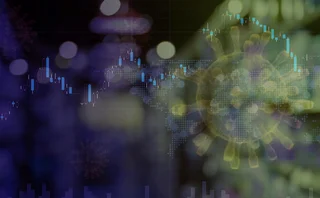
Regulators and exchanges prepare for boom in carbon trading
As the Obama administration moves closer to introducing a cap-and-trade system for controlling greenhouse gases, US regulators and other players are preparing for steep growth in the emissions market.
The US Commodity Futures Trading Commission (CFTC), which will lead regulation of the US carbon market, has set up a new panel, the Energy and Environmental Markets Advisory Committee, to help develop the rules for carbon trading. The 28 members include academic economists, energy industry representatives and regulators. Among them are Richard Sandor, chairman of the Chicago Climate Exchange (CCX), Robert Pickel, the chief executive of the International Swaps and Derivatives Association, former CFTC chairman James Newsome, and former Federal Energy Regulatory Commission chairman Elizabeth Moler.
CFTC commissioner Bart Chilton, who will chair the panel, said: "I know it is sort of rare for government to do a lot of work before a new law is even passed, but carbon markets are too important for us not to get right."
In a report published yesterday, Boston-based financial consultancy Celent acknowledged that carbon trading was almost exclusively concentrated in Europe, with the majority - an estimated 80% - of total volume going through the European Climate Exchange in London. But, Celent predicted, CCX, its US sister exchange, "stands the best chance to grab the initial emission market when the US lays down national emission control policies" and "will see tremendous rise in volume once a national emission policy is put in place".
Meanwhile, in Europe, London-based data provider Markit and BlueNext, the second-largest emissions exchange with 16% of the total market, have agreed to produce indexes and related products for the carbon markets, starting with an end-user allowance spot index and a certified emission reduction spot index. The spot markets are set to grow significantly this year as supply increases, Celent said, pointing out that BlueNext, unlike other carbon exchanges, is almost entirely a spot market, with only 0.3% of total volume made up of derivatives trades. The consultancy also pointed to geographical expansion as the main source of growth in the market, with Japan and Australia set to join the US as emissions-trading markets. The emissions market grew an estimated 78% in 2008 to $116 billion.
See also: CFTC names Chilton head of energy committee
Dow Jones Indexes expands into carbon
EEX and Eurex to launch CER carbon futures
Indexes emerge
Only users who have a paid subscription or are part of a corporate subscription are able to print or copy content.
To access these options, along with all other subscription benefits, please contact info@risk.net or view our subscription options here: http://subscriptions.risk.net/subscribe
You are currently unable to print this content. Please contact info@risk.net to find out more.
You are currently unable to copy this content. Please contact info@risk.net to find out more.
Copyright Infopro Digital Limited. All rights reserved.
You may share this content using our article tools. Printing this content is for the sole use of the Authorised User (named subscriber), as outlined in our terms and conditions - https://www.infopro-insight.com/terms-conditions/insight-subscriptions/
If you would like to purchase additional rights please email info@risk.net
Copyright Infopro Digital Limited. All rights reserved.
You may share this content using our article tools. Copying this content is for the sole use of the Authorised User (named subscriber), as outlined in our terms and conditions - https://www.infopro-insight.com/terms-conditions/insight-subscriptions/
If you would like to purchase additional rights please email info@risk.net
More on Energy
Energy Risk Commodity Rankings 2024: markets buffeted by geopolitics and economic woes
Winners of the 2024 Commodity Rankings steeled clients to navigate competing forces
Chartis Energy50
The latest iteration of Chartis’ Energy50 ranking
Energy trade surveillance solutions 2023: market and vendor landscape
The market for energy trading surveillance solutions, though small, is expanding as specialist vendors emerge, catering to diverse geographies and market specifics. These vendors, which originate from various sectors, contribute further to the market’s…
Achieving net zero with carbon offsets: best practices and what to avoid
A survey by Risk.net and ION Commodities found that firms are wary of using carbon offsets in their net-zero strategies. While this is understandable, given the reputational risk of many offset projects, it is likely to be extremely difficult and more…
Chartis Energy50 2023
The latest iteration of Chartis' Energy50 2023 ranking and report considers the key issues in today’s energy space, and assesses the vendors operating within it
ION Commodities: spotlight on risk management trends
Energy Risk Software Rankings and awards winner’s interview: ION Commodities
Lacima’s models stand the test of major risk events
Lacima’s consistent approach between trading and risk has allowed it to dominate the enterprise risk software analytics and metrics categories for nearly a decade
2021 brings big changes to the carbon market landscape
ZE PowerGroup Inc. explores how newly launched emissions trading systems, recently established task forces, upcoming initiatives and the new US President, Joe Biden, and his administration can further the drive towards tackling the climate crisis
Most read
- Top 10 operational risks for 2024
- Top 10 op risks: third parties stoke cyber risk
- Japanese megabanks shun internal models as FRTB bites







